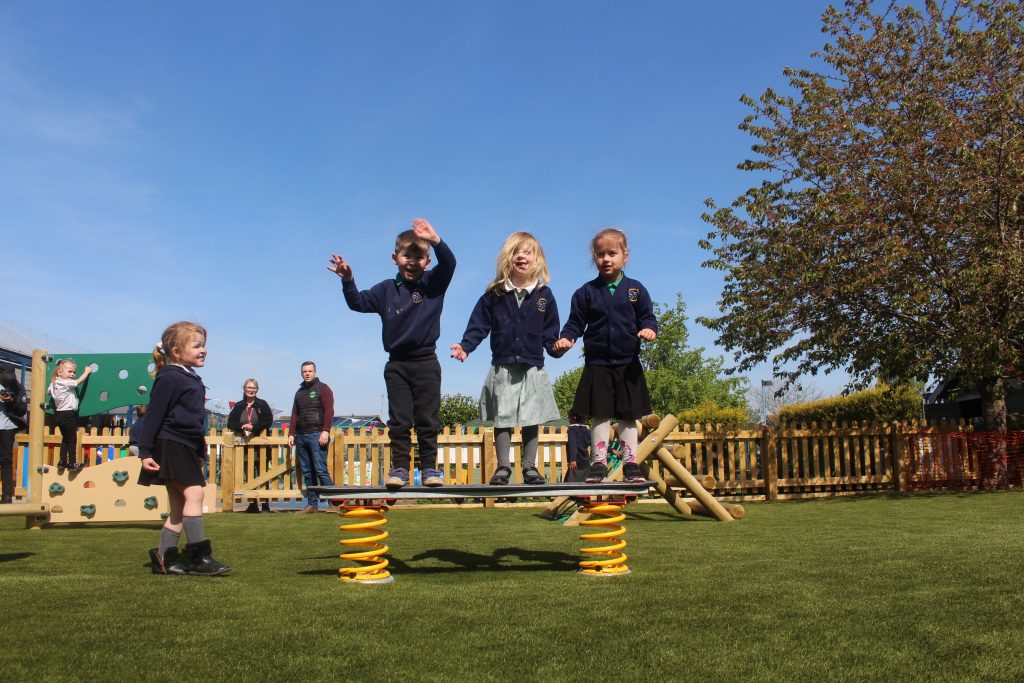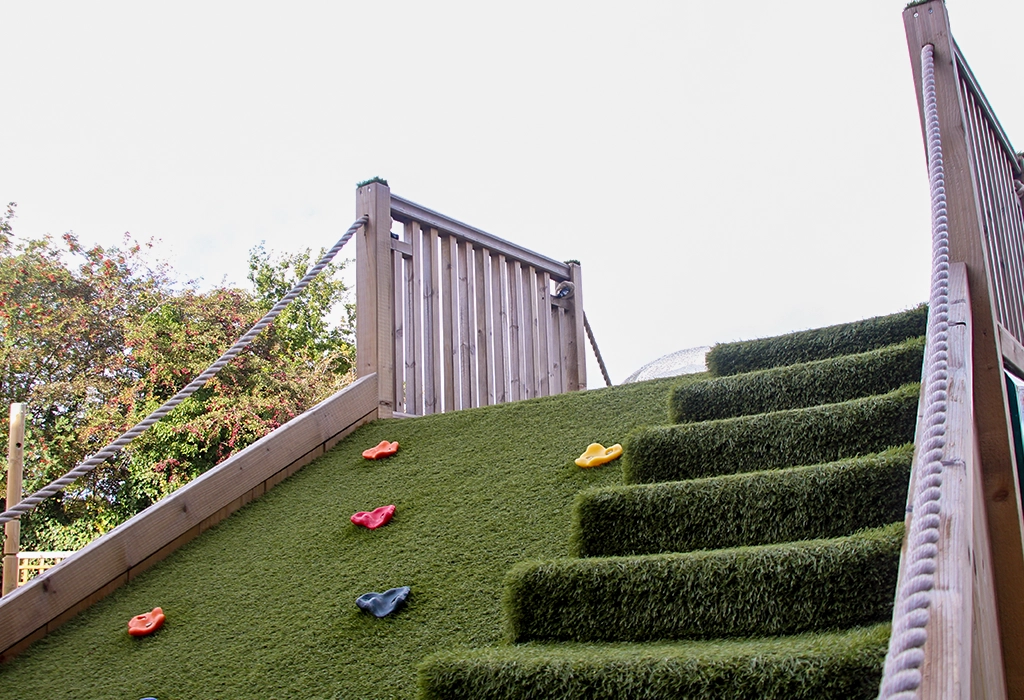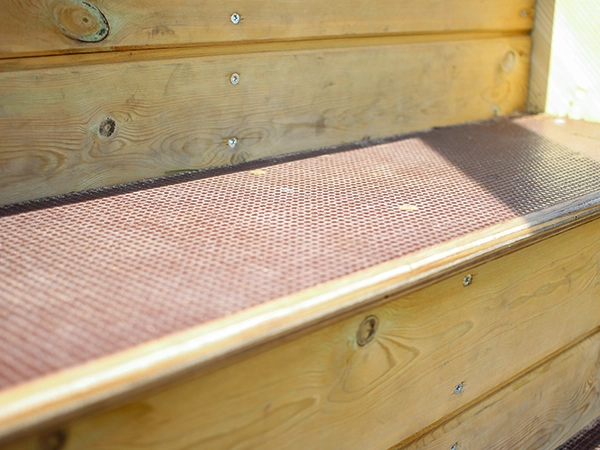BLOGS
THE IMPORTANCE OF RISK-TAKING IN SAFE PLAYGROUND DESIGN

It can be understandably difficult to allow children to take risks on the playground, but with an intuitive and safe playground design, risk-taking in outdoor play can have many benefits for childhood development. Fun and active playgrounds provide opportunities for the important social and physical development 5-7-year-olds require for the development of gross motor skills as well as encouraging independent playground games KS2 children to learn social skills and healthy competition from.
For children to discover outdoor play, a certain level of risk is required to meet key developmental milestones and push children safely out of their comfort zones at their own pace. From early years of play to active play education in later years, risk-taking is a vital part of play, key to building resilience in children.
How Playground Design Creates Healthy and Fun Challenges
Different age groups require different attention and intentions in their playground equipment and games as they develop. Inclusive playground equipment and design should therefore focus on creating an active and fun playground that fosters healthy independence and risk-taking for all ages.
One of the reasons why play is important in early years education is that it is an exploratory process for learning independence and testing the limits of gross motor skills in a safe environment. Trim trails and climbing walls can be included in bespoke playgrounds for nurseries and KS1 school children with the appropriate challenges. Balance beams, crawl through tunnels and stepping logs are great ways children are able to explore physical development, initially with adult-led play and supervision, and eventually in a free-flow play environment.
What is Free-Flow Play?

Free-flow play is an exploratory play style that emphasise independence and choice in play. Smart play design can encourage cooperation with other children and experimentation with risk-taking behaviour. Providing a wide range of ability-inclusive playground equipment also enables students can develop their own personal challenges and playground games.
Trim trail obstacle course races or climbing challenges are common playground games in KS1 as students learn social play and self-regulation skills. This risk-taking play, however, does require adult supervision to ensure all play is appropriate so that children experience the benefits learning through play can bring without the harm that can come from taking on too large of a risk.
Greater Challenges for Fun and Active Playgrounds for Older Kids
Challenging playground games KS2 children are drawn to often inherently come with a greater embracing of risk-taking as part of fun and active playgrounds. Active play education received in PE lessons is important to ensure awareness of children’s physical abilities so that they don’t push risks too far. However, beyond this, independent free-flow play is core to building resilience in children as they develop greater awareness of the world around them.
Examples of active play equipment for a great challenge for older kids include:
- Clamber stacks
- Agility sticks
- Trim trail frame climbers
- Multi-play climbing and sliding equipment
- Monkey bars
- Hand-over-hand timber and rope climbers
- Sports and exercise gyms
- Multi-Use Games Areas
Emphasis is put on greater physical and team building activities KS2 children thrive on as both risk-taking behaviours as active challenges, but also in terms of social risk-taking through competitive games. Each child has different levels of natural risk-taking behaviour, but the importance of playground design and equipment choices is to emphasise the choice to take risks as an option that is open for students to discover and explore.
Safety Is Essential
Risk-taking is important, but these risks should not put children in harm’s way. It is the job of effective playground design, installation, and aftercare to give children options to challenge themselves while ensuring safe play experiences for all.
An outdoor risk assessment for early years and later school playgrounds should include:
- Regularly monitored, structurally sound playground equipment and shelters
- Effective wood treatment on timber from PEFC-certified suppliers
- Secure fastenings and jointings on all playground equipment
- Even ground with no trip edges
- Playground safety surfacing with appropriate critical fall height protection and shock absorbency with testing to BS:EN1177 standards
- Playground repair on any equipment or surfaces that fall below standards
How can The School Playground Company help you?

The School Playground Company aims to help you provide your students with fun and active playground opportunities for safe risk-taking and independence. Our playground design specialists and varied equipment options provide challenging and safe play spaces for all ages.
If you think our playground equipment is right for your playgrounds you can continue to browse our products, or contact us today for more information on how we can help.
